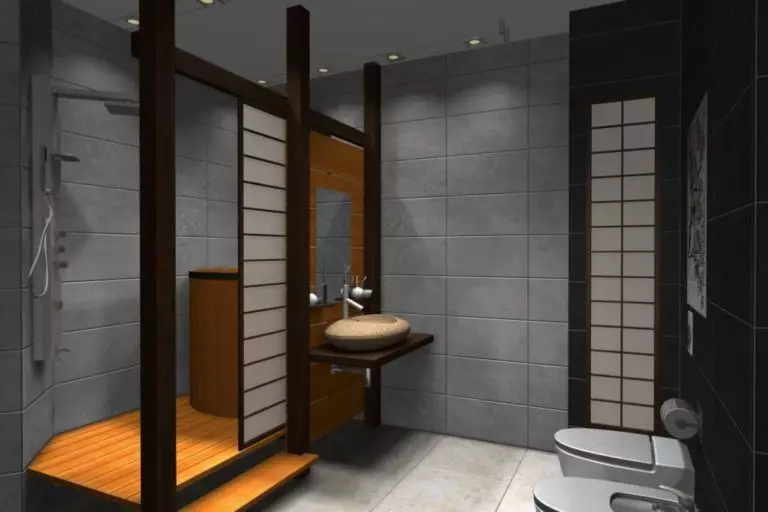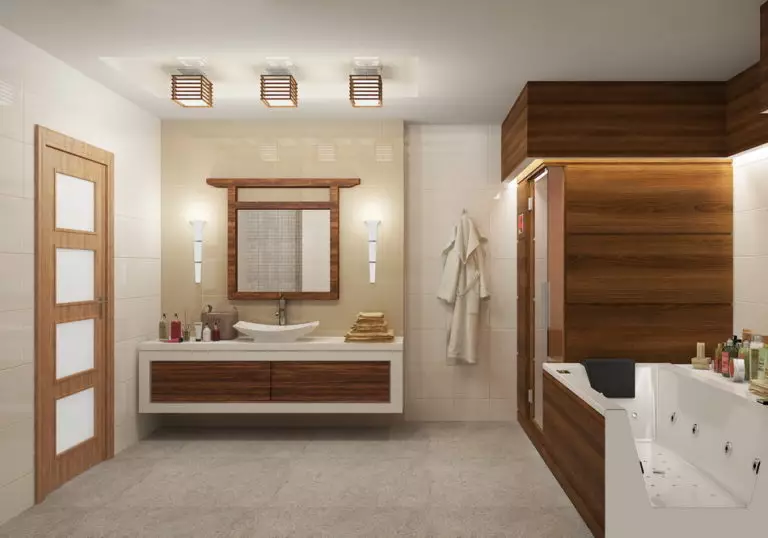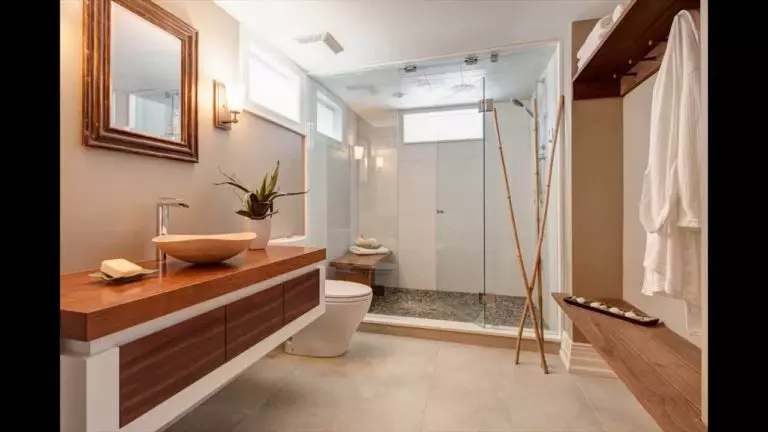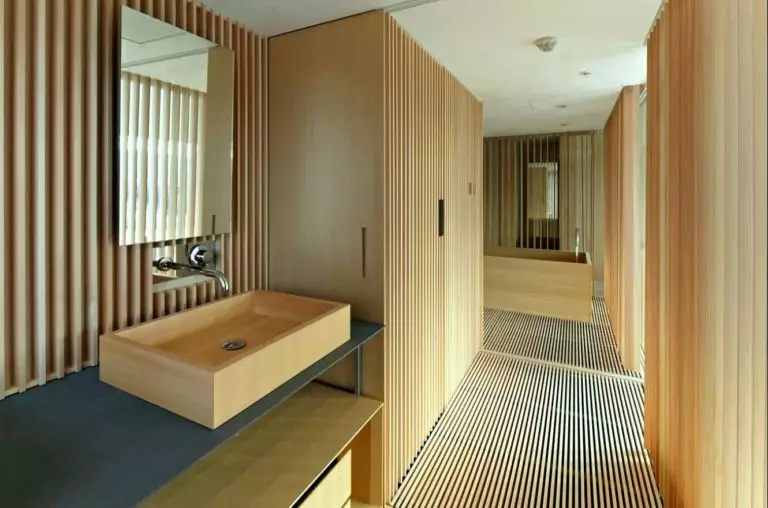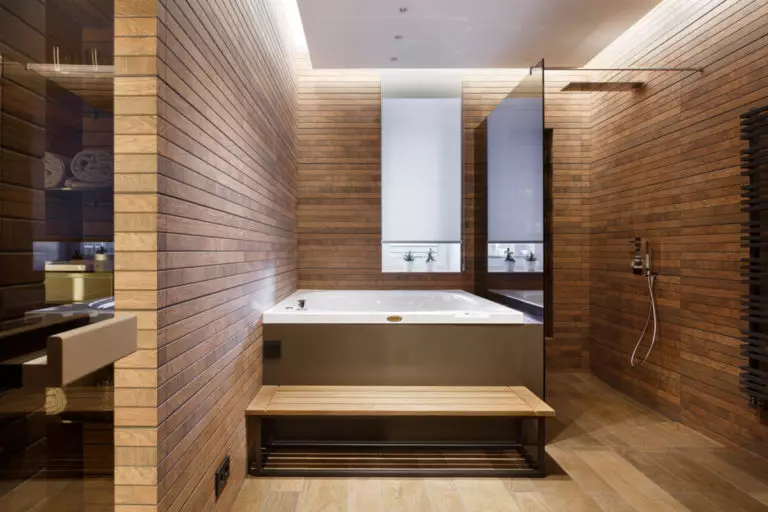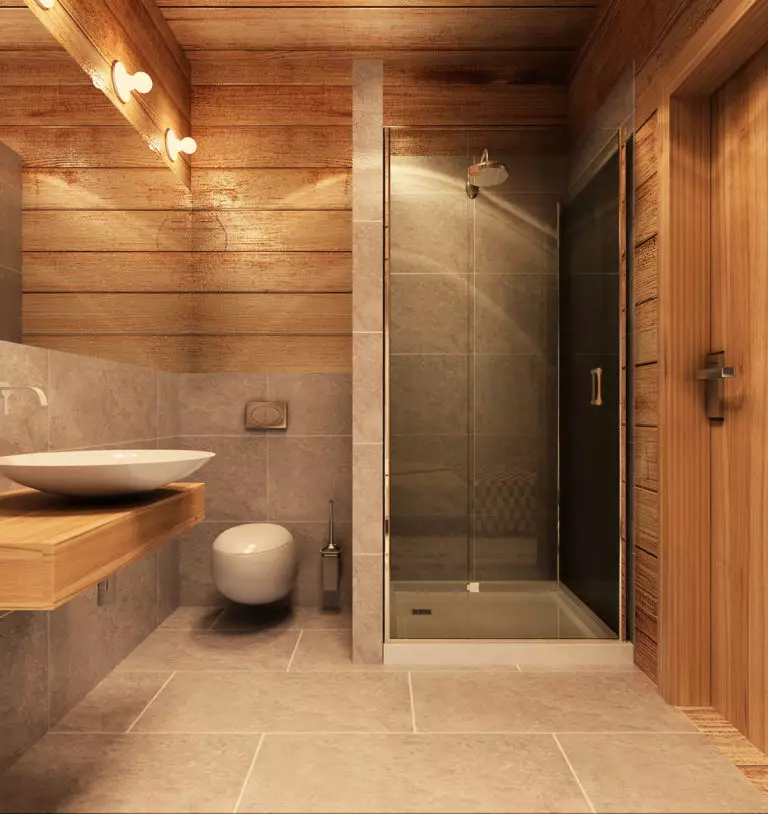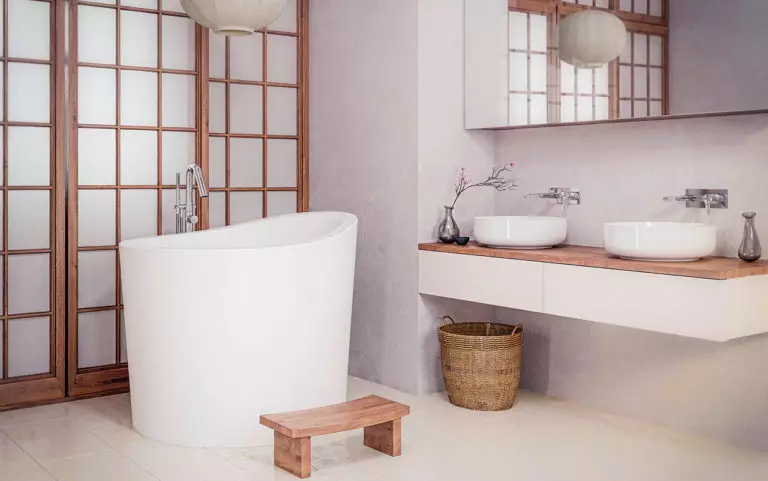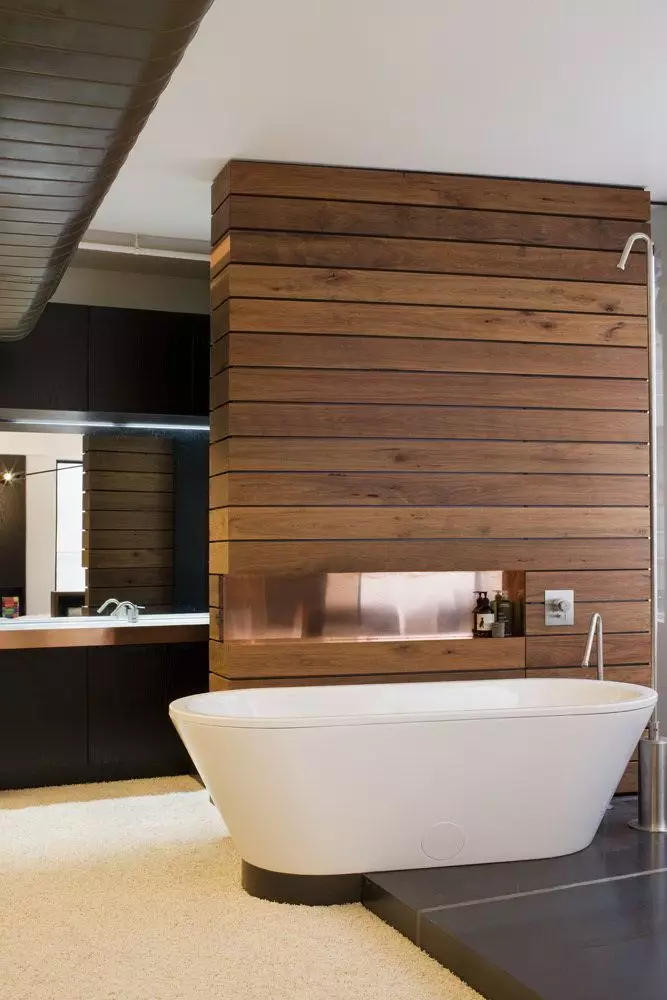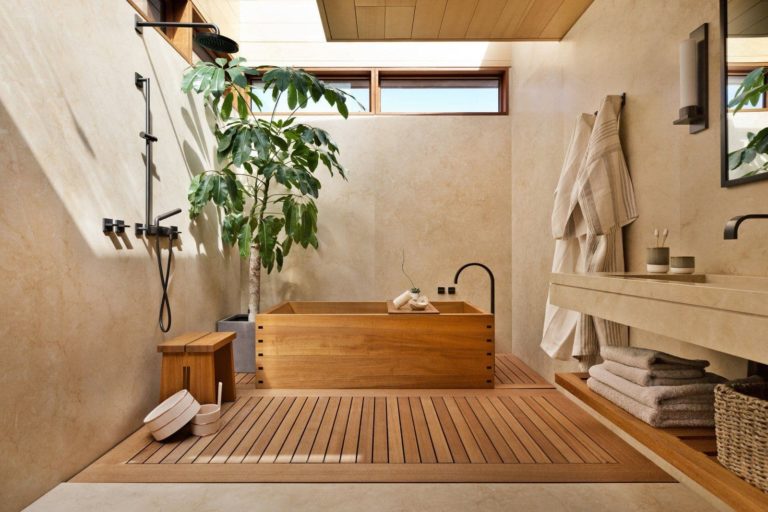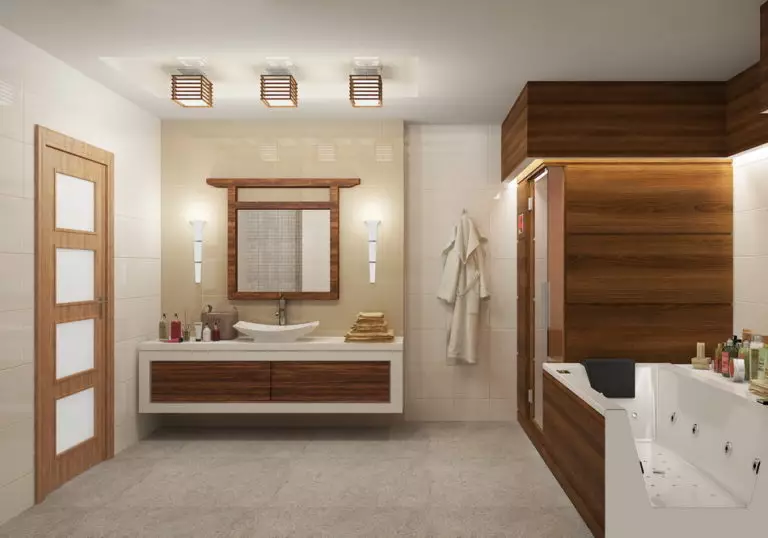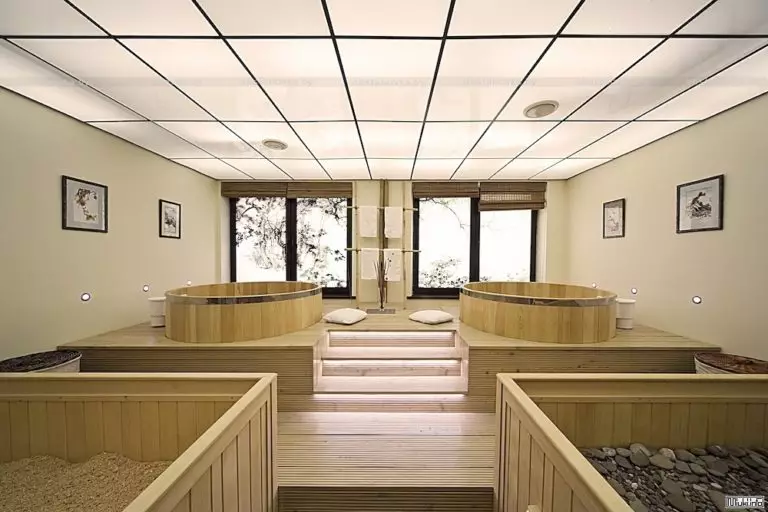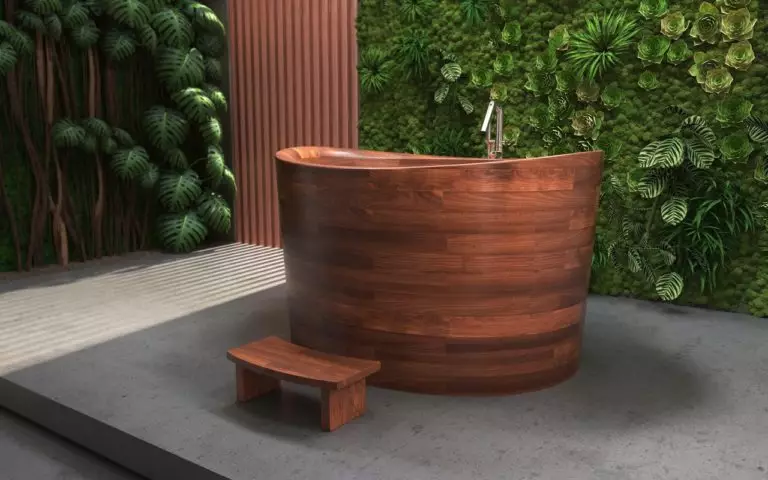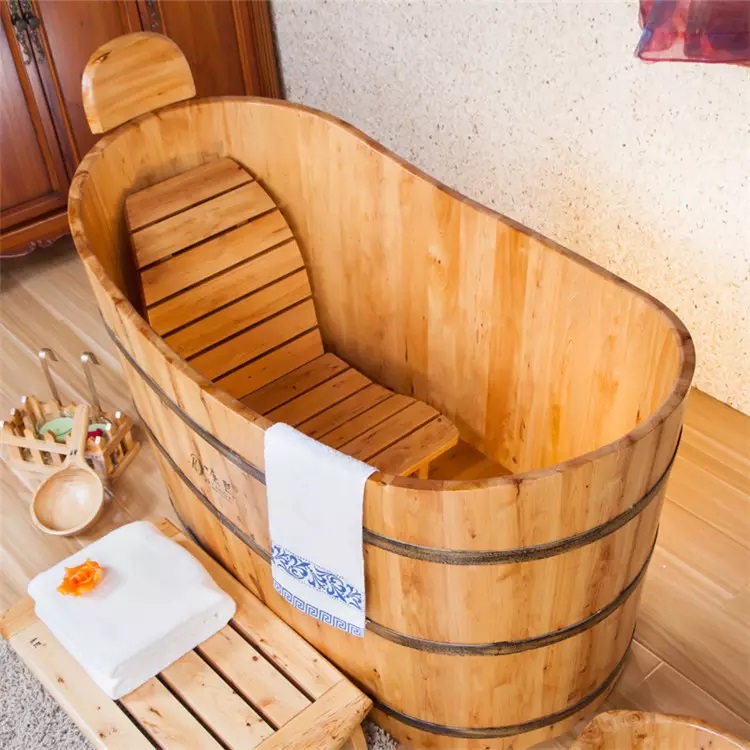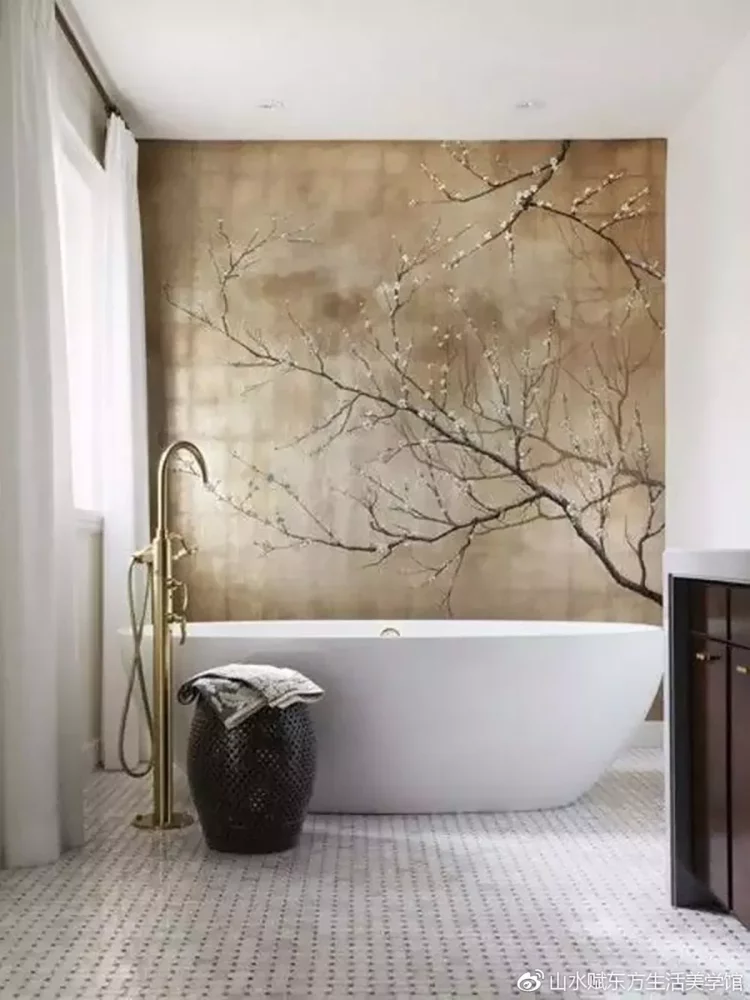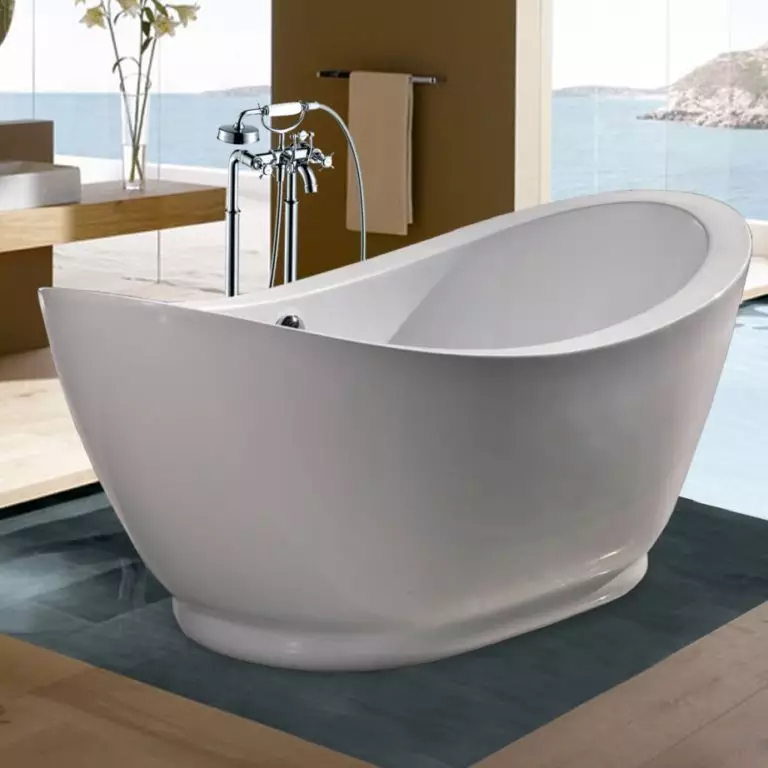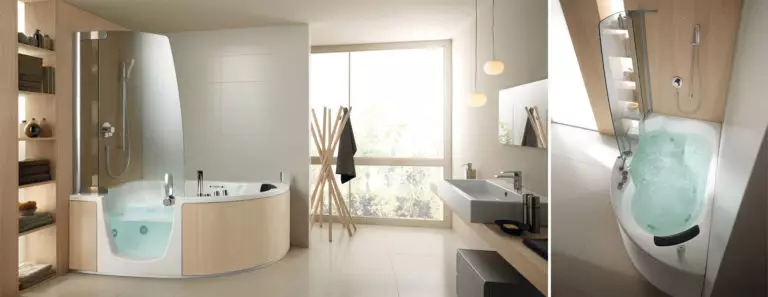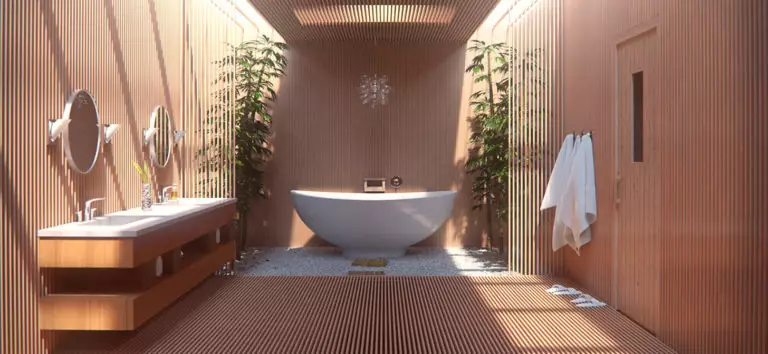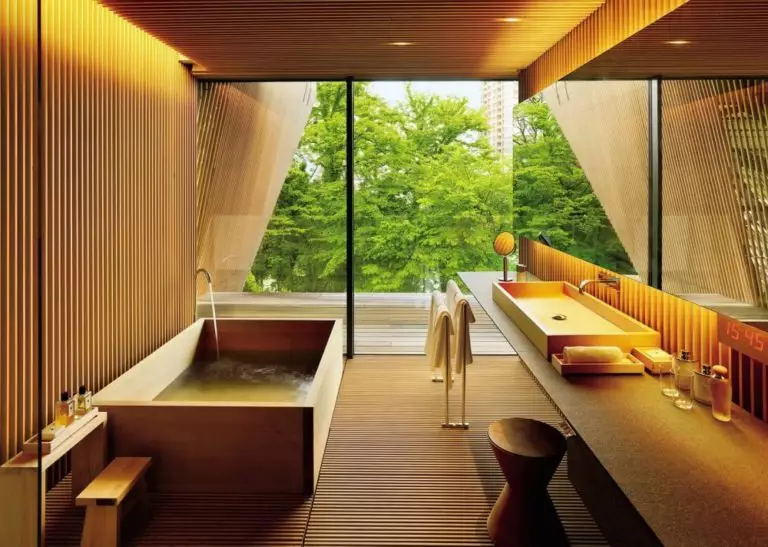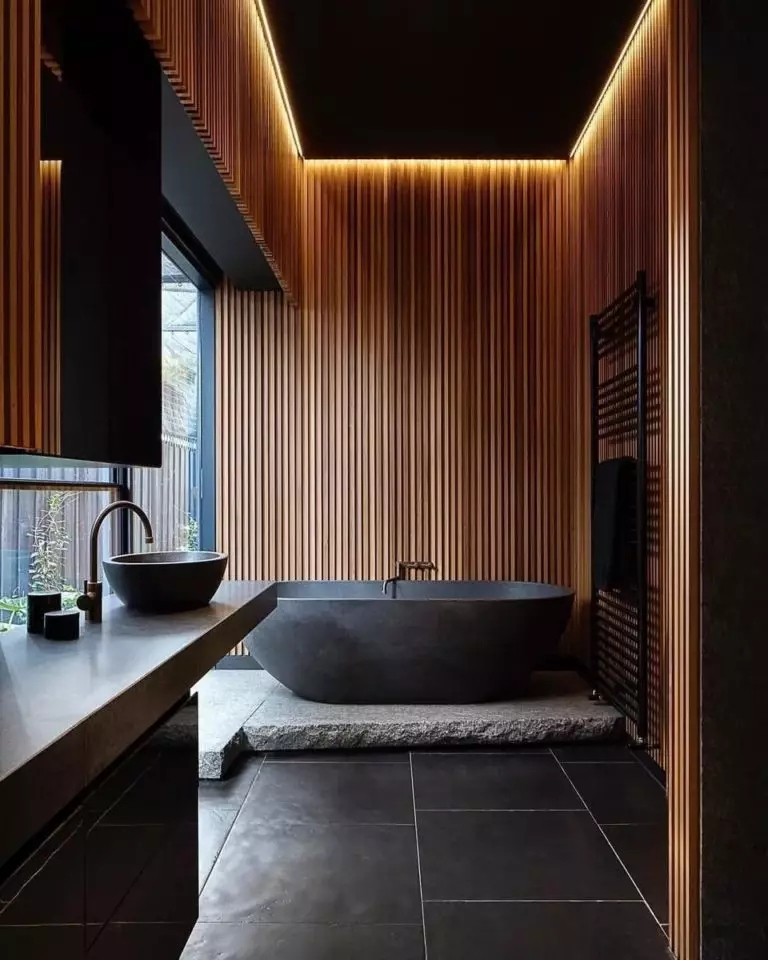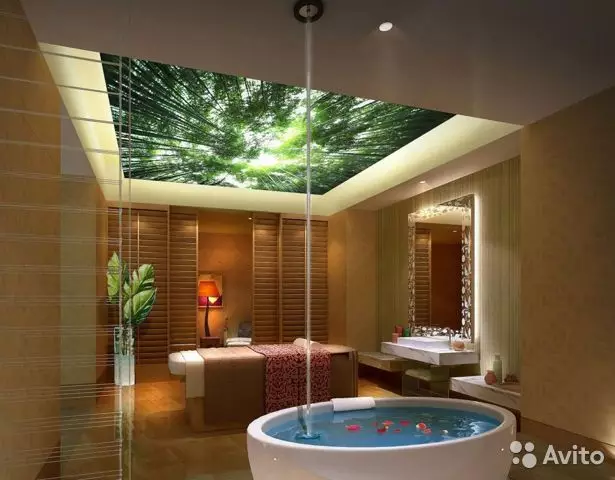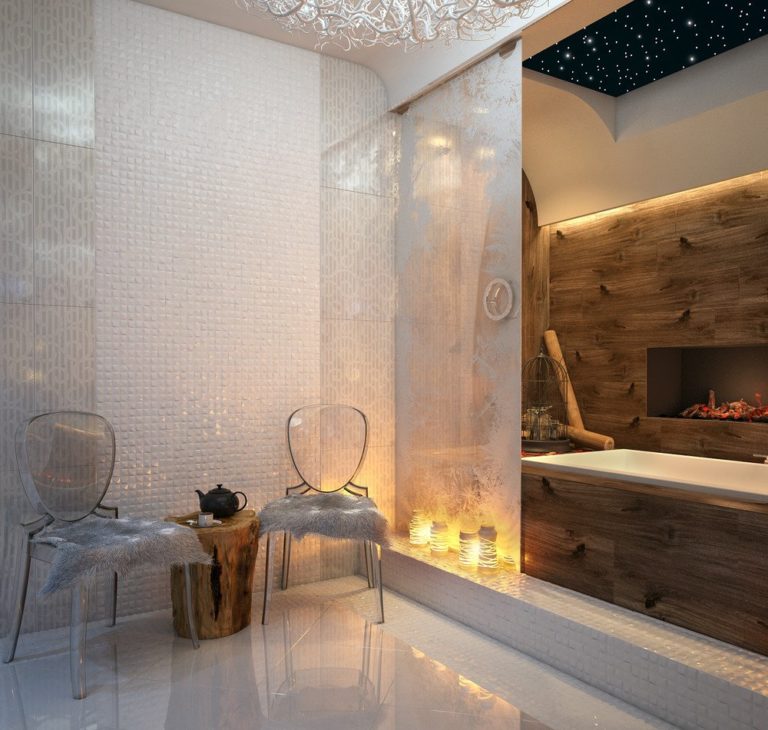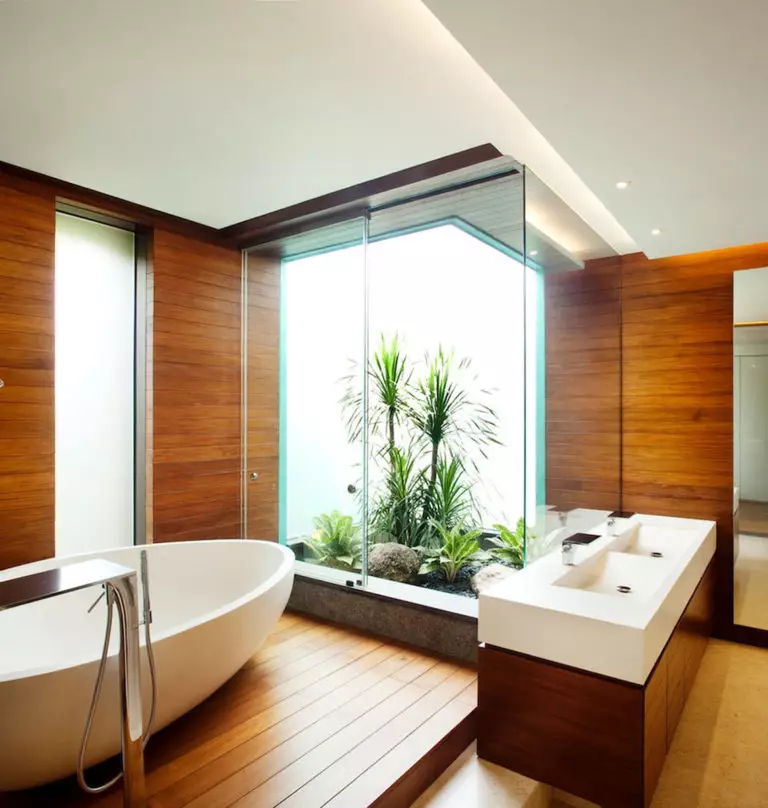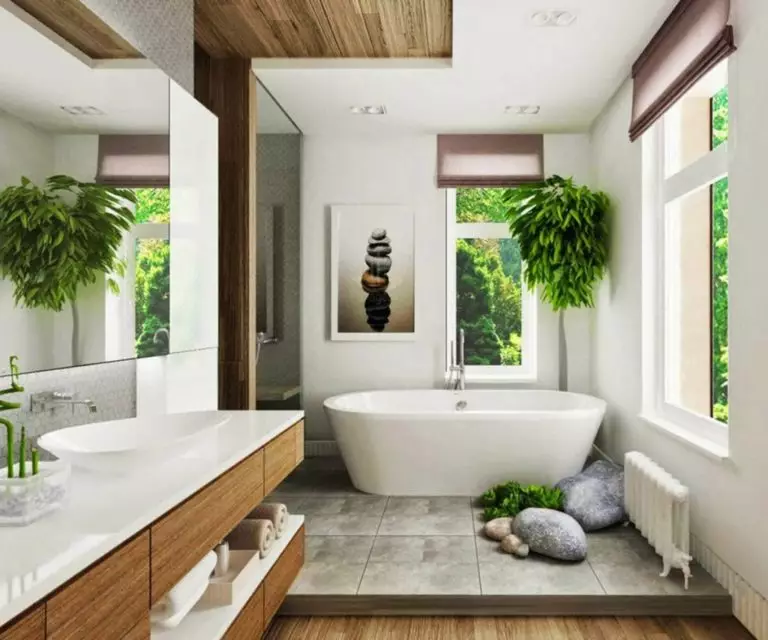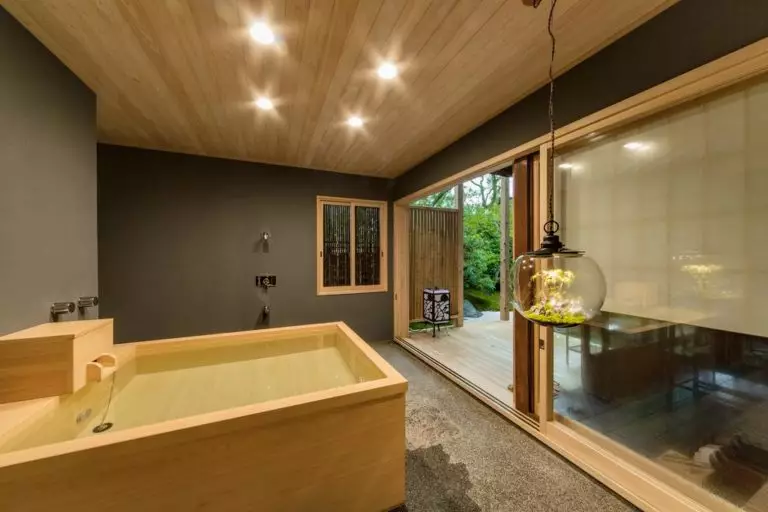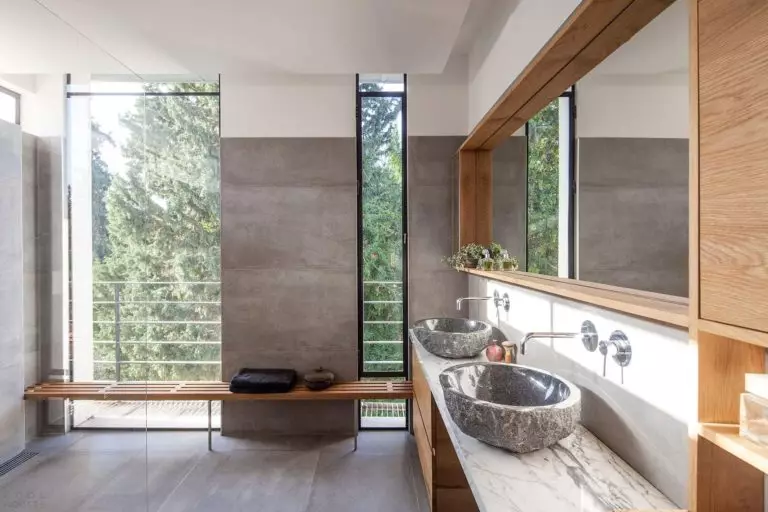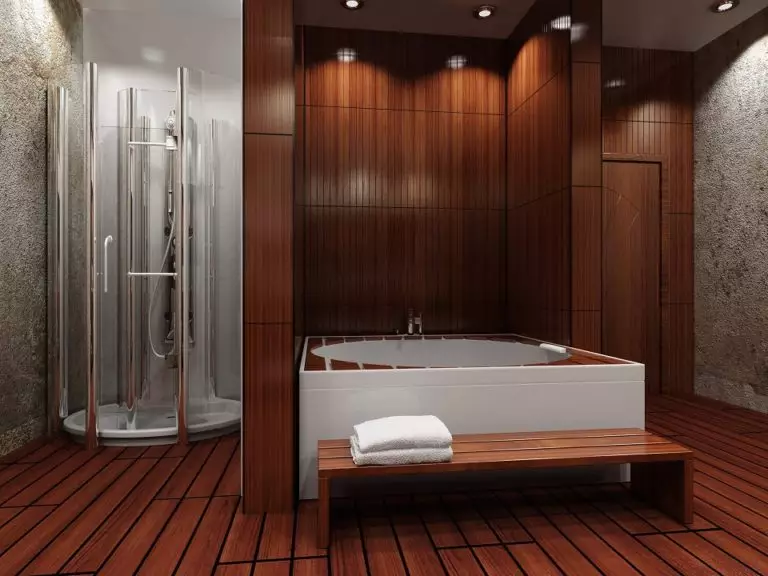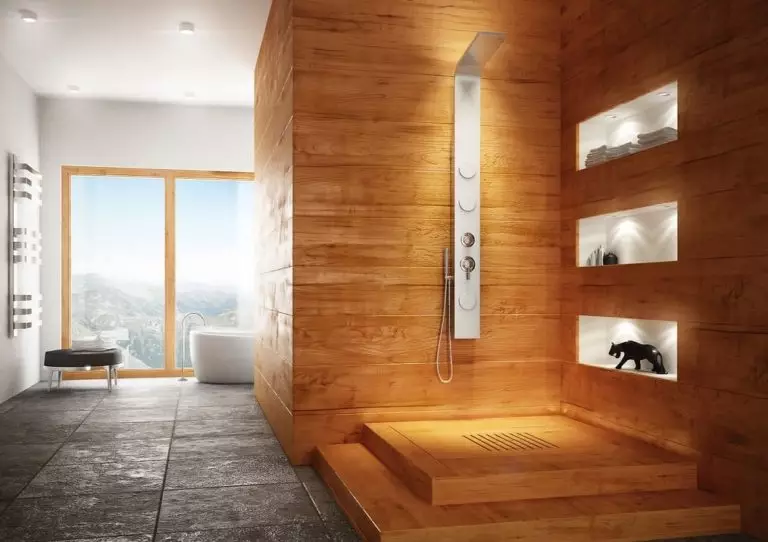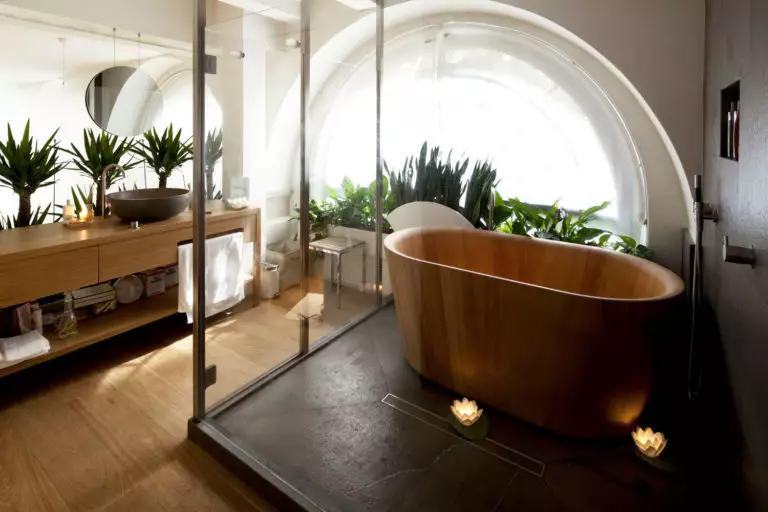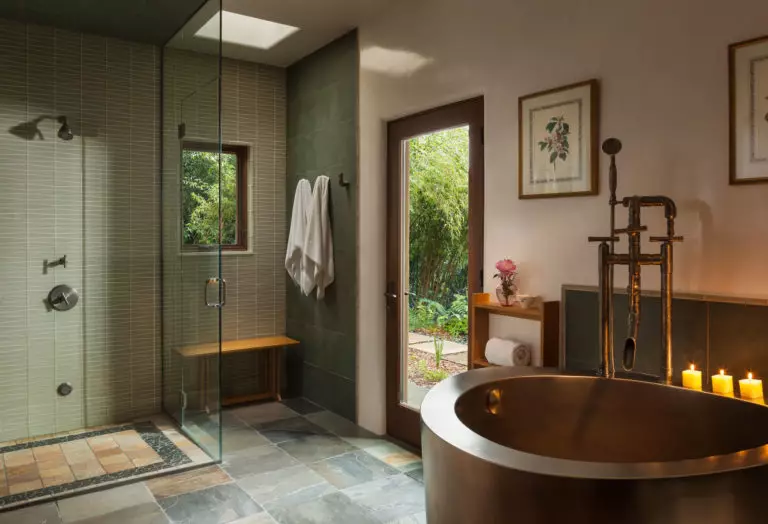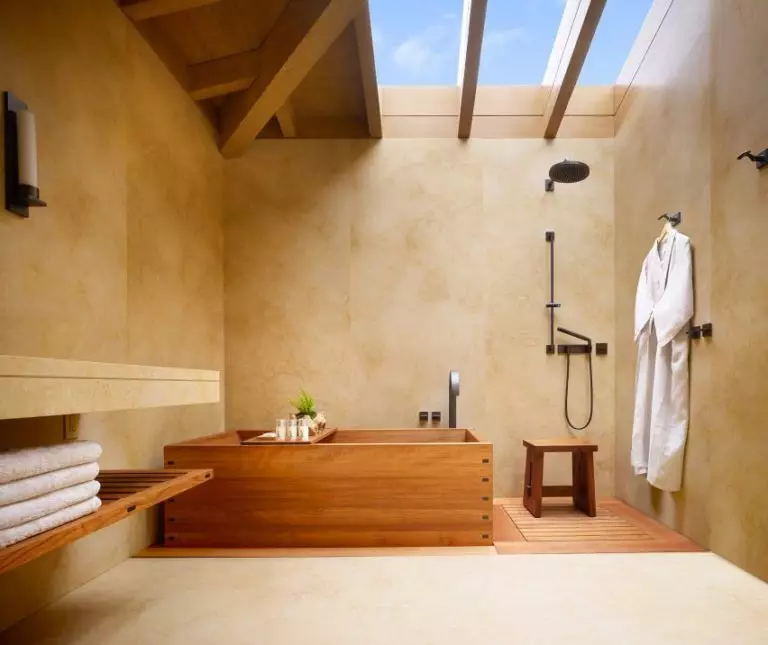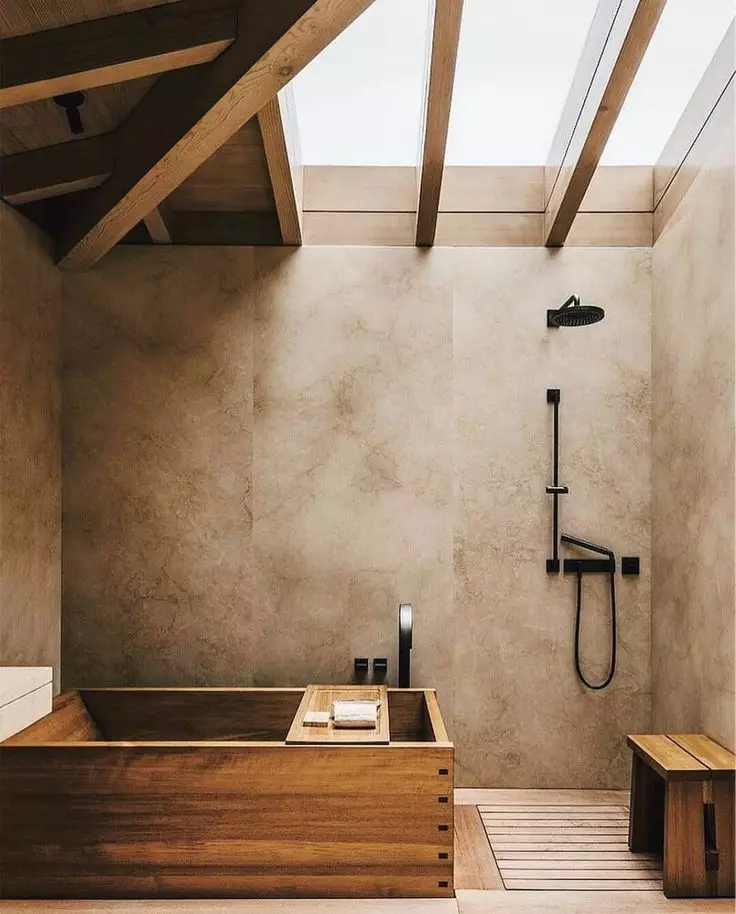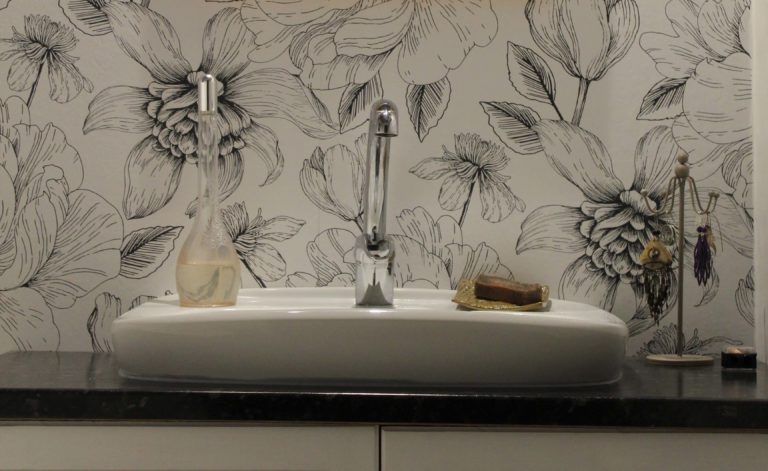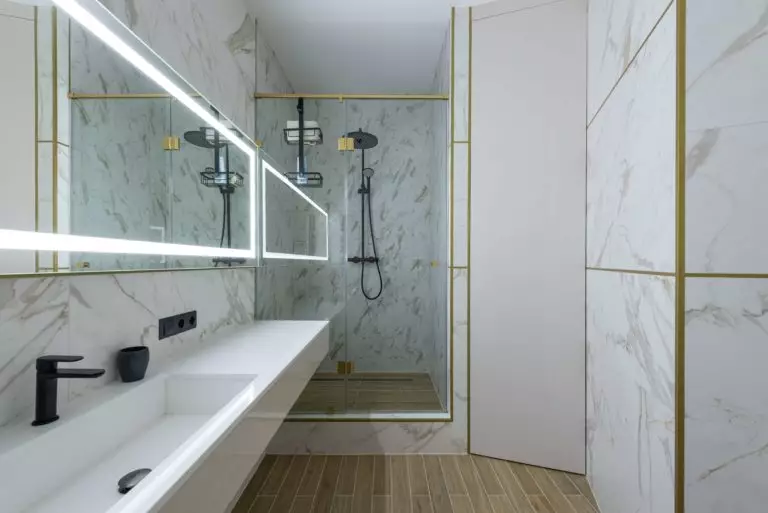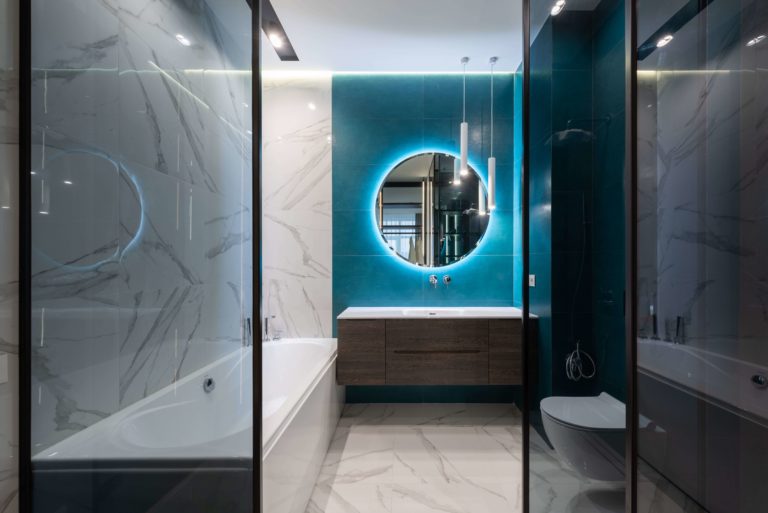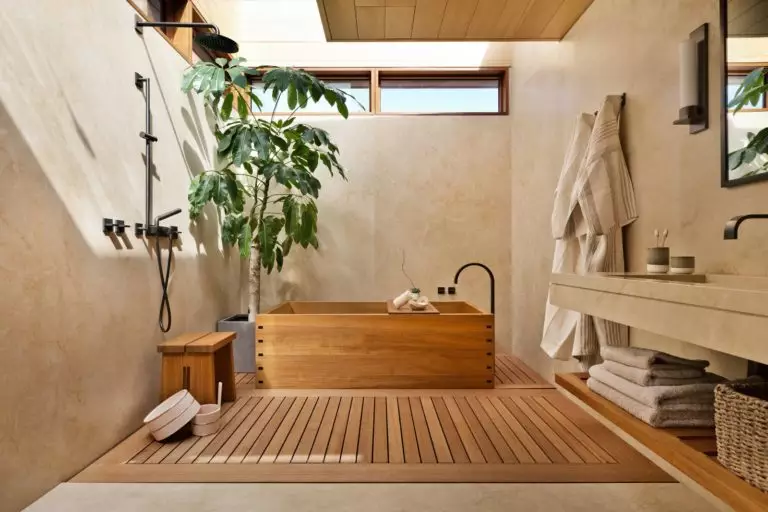
Refinement, tranquility, a sense of unity with nature, and a look at your own home as a place of strength and harmony – the Japanese style in the interior enchants with its special magnetism. There is an impeccable balance in its laconicism and the selection of textures and colors – the desire for something true and eternal. A similar design can be realized in any living space, from a city apartment to a country cottage – and the bathroom is no exception.
If you have long appreciated all the beauty of Japanese minimalism and now dream of equipping a bathroom in this way, you need to clearly understand the main thing for yourself: the interior of this room is based on a real philosophy based on the adoption of bath procedures as a special art that gives purity of the body and thoughts. And if you cannot imagine your life without a leisurely bath and consider visiting this room as a kind of ritual, you will definitely like this design.
Japanese-style bathroom design: key features
Of course, despite the penchant for simplicity and minimalism, Japanese-style bathroom interiors are quite diverse – however, they obey certain principles:
Regularity, a tendency to contemplation, a philosophical view of the world – all this is fully characteristic of Japanese culture and could not but affect living quarters’ design. When decorating a bathroom in this way, it is essential to focus on restraint, unobtrusive asceticism, sophistication, and a moderate amount of expressive accents. Only in this case you will be able not only to enjoy water procedures but also to feel vigorous and morally rested.
Space planning and zoning
The Japanese style is primarily about harmony. And harmony is generated by two things – geometry and the correct location of things. That is why the design in this direction implies the complete separation of the bathroom from the toilet – combined toilets in Japan-is considered almost sacrilege.
Another important point is the mandatory delimitation of functional areas. So, for example, if in your bathroom there was a place for the bath tub itself, an open shower, and a sink, then each of these elements should represent at least a partially isolated space. In this case, the best solution would be Japanese shoji partitions made of wood and thin plastic or glass.
Palette
It is hardly worth saying that the Japanese style prefers calm and restrained tones, as close as possible to those created by nature itself – those who are at least a little interested in this direction in the design are well aware of this. When designing a bathroom project, take a look at the following tones:
“Feng shui colour charts tend to move more towards earthy shades which are often more related to nature,” comments Ruban Selvanayagam of UK home sales specialists Property Solvers.
If you still want to add at least a little brightness to the pacifying calm interior of the bathroom, then you can easily use neat accents of rich shades – terracotta, plum, wine red, or graphite black. Try not to overdo it: your sight also needs rest.
Materials
And now – a few words about Japanese-style bathroom decoration. As you probably could have guessed from numerous photos, natural wood is the dominant material in such interiors. However, the designers insist on its limited use in modern houses and apartments and suggest stopping at finishing on a maximum of 50% of the surfaces – both in connection with the need to remove visual congestion and due to practicality, since not every type of wood can withstand such prolonged exposure to moisture. That is why it is worth not only carefully selecting wood panels and other elements for decoration but also trying their combinations with the following types of materials:
At the same time, it is advisable to avoid any drawings and patterns on the surface of the tiles – the only exceptions are traditional Japanese motifs like hieroglyphs or fragments of national painting.
Some important terminology: types of Japanese bath tubs
For those looking to create an authentic Japanese bathroom environment, it will probably be interesting to learn a little more about the tradition of body washing – namely, about the bath tubs used for this. Today, the following types of Japanese bath tubs are distinguished:
If you are still afraid to install a wooden bathtub at home, then you may well install a more familiar acrylic bathtub. In this case, it is also worth giving preference to clear geometric shapes (primarily a square and a rectangle) and taking care of their harmonious surroundings – for example, wood paneling. However, those allowed by the bathroom area install both an ordinary bath tub and a traditional furako in the room – to create an atmosphere and a variety of water procedures.
And other plumbing
We have already talked about suitable for Japanese-style bathrooms. However, the need for plumbing equipment does not end there. The following elements will help to make the interior functional and harmonious:
In the Japanese bathroom interiors, built-in square sinks and faucets with an open spout are also common. The most important thing, in this case, is to choose not only an aesthetic and appropriate design-project but also comfortable to use equipment: nothing should disturb the serenity of your bathing procedures.
Lighting
The ideal bathroom in the spirit of Japanese minimalism has at least one window, which provides ample natural light, which can be controlled using bamboo blinds, and in some cases, the same shoji. If windows are not provided in the room, it is important to ensure that the lighting is sufficiently rich and at the same time comfortable for the eyes and should not be excessively bright.
Discreet ceiling spots with warm light, hidden lighting lines, and laconic sconces with styling in the form of cases braided with bamboo or black metal will help achieve the desired light.
Japanese bathroom: Conclusions + Photo Gallery
A Japanese-style bathroom is a feeling of freedom, pacifying simplicity, true comfort, and the complete absence of everything superfluous. Even if you have chosen a different design for the rest of the premises in the house or apartment, it is the bathroom who will become a real highlight of your interior.

